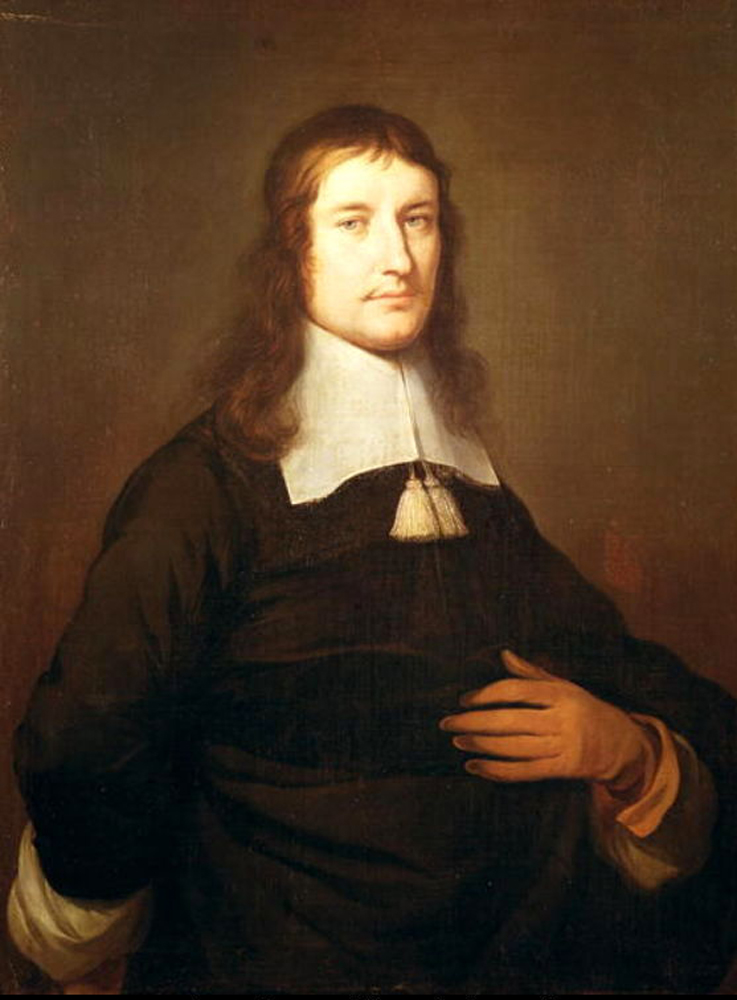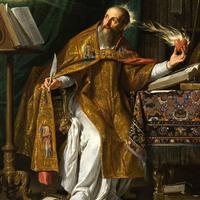More about Philippe de Champaigne
Works by Philippe de Champaigne

Sr. Contributor
Philippe de Champaigne was noted for his stern religious beliefs, but if Mel Gibson has taught us anything, religious fanaticism need not mean a lack of controversy or even sex appeal.
The Belgian-born, French artist may have been clean as a whistle spiritually, but he managed to spice things up with a scandal here and there.
He got his first big break decorating the Palais du Luxembourg (with fellow painter Nicolas Poussin) for the Queen Mother, Marie de Medici. Champaigne was working under artist Nicolas Duchesne. Their relationship turned sour when Duchesne became jealous of Champaigne’s popularity at court. To add insult to injury, Duchesne’s meekly pretty daughter Charlotte appears to have caught Champaigne’s eye. Upstaging the boss is a risky move…courting the boss’s daughter can be career suicide. He fled France to escape the wrath of Duchesne, but returned to marry Charlotte after Duchesne conveniently died. Nothing like moving in on the orphaned daughter while papa is still warm in his grave.
He became the official painter of the Queen Mother, and the only painter allowed to paint Cardinal Richelieu in his Catholic robes. Marie de Medici was an avid patroness of the arts, but her vicious intrigues led her own son to exile her, imprison her, and wage war against her on various occasions. Richelieu’s ruthless plotting earned him a reputation as one of literature’s villains in The Three Musketeers (portrayed in cinema by such cuddly characters as Vincent Price, Tim Curry and Christoph Waltz). Not the nicest company to keep, but profitable.
Later in life, Champaigne scorned the vanity of his noble patrons, as well as the opulent conventions of Baroque as he turned increasingly toward Jansenism (a severe, puritan-like Catholic faith). His portraits became more Austere, emphasizing the inner-psychology of his sitters rather than superficial ornamentation. When his daughter Catherine (a nun) was miraculously cured of paralysis, Champaigne painted his Ex-Voto de 1662 as a thank you gift for the convent. Revolutionary at its time for its unadorned depiction of the human experience of spirituality (what, not cherubs? Pshaw!), the painting is now considered his masterpiece and hangs in the Louvre. Not bad for something that was basically a seventeenth-century Hallmark card.
Champaigne’s legacy was extensive enough to feature in Rostand’s classic play Cyrano de Bergerac: “I should not look to find his portrait by the grave hand of Philippe de Champagne.” a reference to the titular Cyrano’s ugliness.
Featured Content
Here is what Wikipedia says about Philippe de Champaigne
Philippe de Champaigne (
French pronunciation: [filip də ʃɑ̃paɲ]; 26 May 1602 – 12 August 1674) was a Brabant-born French Baroque era painter, a major exponent of French Baroque painting. He was a founding member of the Académie royale de peinture et de sculpture in Paris, the premier art institution in the Kingdom of France during the Ancien Régime.
Especially in the 1630s and 1640s, he was the leading French court painter of portraits and religious subjects. He continued to work almost until his death, exhibiting a Supper at Emmaus in 1673.
Check out the full Wikipedia article about Philippe de Champaigne











